Which pipe is better for the well
Implementation on the site of an autonomous source of water supply, in the absence of a centralized one, is carried out by drilling its own well. It is a complex hydraulic structure. It is not enough to drill a well, it is necessary to protect it from the shedding of the soil, water entering the well from overlying horizons, including upper water. A pipe with a diameter smaller than the diameter of the well is inserted into the well. This process is called casing, and the pipe - casing. In the casing down the pump, operational pipes through which water is supplied. Geotechnical conditions at different sites may differ in soil composition, aquifer depth, soil and water chemical composition, groundwater level and heaving of soils. It is these parameters, as well as the drilling technology, that should determine which pipes are best for the well to choose.
Species

As casing pipes use pipes made of the following materials:
- steel;
- asbestos cement;
- plastic.
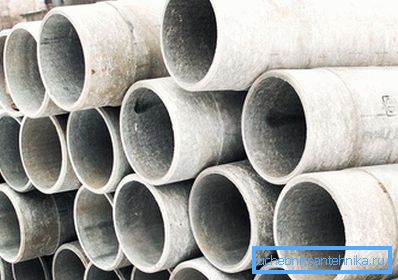
There are a number of requirements for pipes:
- Durability - the service life must exceed the service life of the well (up to 50 years).
- Tightness - pipes should not pass water, including connections among themselves. Water should not enter the well from the overlying layers.
- Strength - pipes must withstand ground pressure over the entire length of the well.
- Environmentally friendly - pipe material should not affect the water quality in the well.
Knowing the technical characteristics and parameters of various materials, it will be easier to decide which pipes to use.
Steel
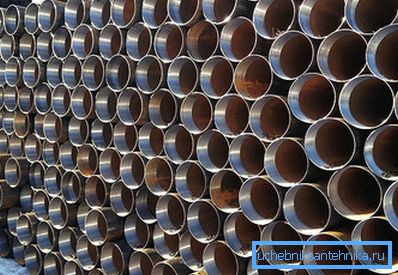
Metal - the most reliable, time-tested material. The steel pipe serves more than 50 years, keeping the water clean and withstanding any load. Pipes are recommended to be used on difficult grounds for artesian wells of different depths. Pipes made of “black” steel, galvanized, enameled, and stainless steel differ.
Stainless steel pipes are very expensive, galvanized can contribute to water pollution with zinc oxide, enameled when chipped rust very quickly. The disadvantages of steel pipes include a lot of weight and high cost.

The appearance of rust on pipes should not be considered as a dangerous phenomenon for water, since rust does not dissolve in water and is easily filtered. With steel pipes it is easier to repair the well.
Asbestos cement
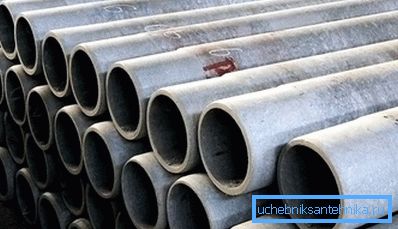
Reliable, durable material, the service life of which is unlimited. Asbestos cement pipes are chemically neutral, have no effect on water quality. Compared to metal pipes, they have a significantly lower cost.
The disadvantages of asbestos-cement pipes include their fragility, which limits the functionality during well operation. Thick pipe walls require drilling a larger hole diameter than steel and plastic pipes. Asbestos cement pipe can not be used as a filter column at the bottom of the well, so the only option is to use for artesian wells with a depth of up to 100 m. The depth limitation is due to the fragility of the material at high soil pressure.
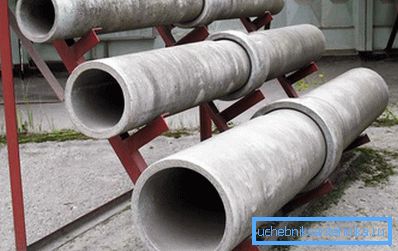
Most drillers do not know how to work with asbestos cement, couplings for joining, as pipes require great care. That is why these pipes are not widely used.
Also diverge opinions about the environmental performance of this material. In addition, the diameter of the well under the asbestos cement pipe must be large, which will increase the cost of drilling.
PVC
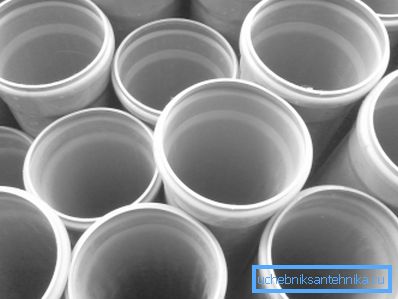
Plastic is a relatively new promising material from which pipes have been manufactured for several decades. The plastic from which the pipes are made is divided into:
- non-plasticized polyvinyl chloride (PVC);
- low pressure polyethylene (HDPE);
- polypropylene (PP).
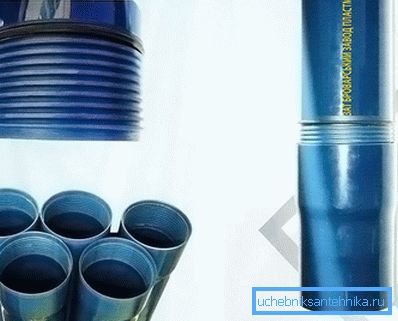
The use of plastic as a material for casing has most of the advantages of steel and asbestos-cement pipes.
Plastic pipes are not subject to corrosion, durable, lightweight, inexpensive. However, they are less resistant to mechanical stress and have less strength than metal pipes.
When the soil is exposed to the pipes, there is a high probability that both the point and the displacement of the soil layers will deform (distortion of the pipe over a long distance). Therefore, the use of plastic is possible for wells with a depth of 50–60 m in the absence of floats, heaving soils.

To find out which casing will be optimal, it is necessary to analyze the parameters of the soil, the depth and diameter of the future well, the experience of neighbors in drilling wells and financial capabilities. For deep artesian wells there is no alternative to steel pipes. In wells for limestone up to 100 m in depth, in addition to metal ones, asbestos-cement pipes can be used. In wells drilled in simple soils with a depth of up to 50–60 m it is better to use plastic pipes. If the soil is complex, heaving or quicksand, then the use of steel pipes can not be avoided.
Video
In the video provided, you will find out the details of the selection of pipes for the well: